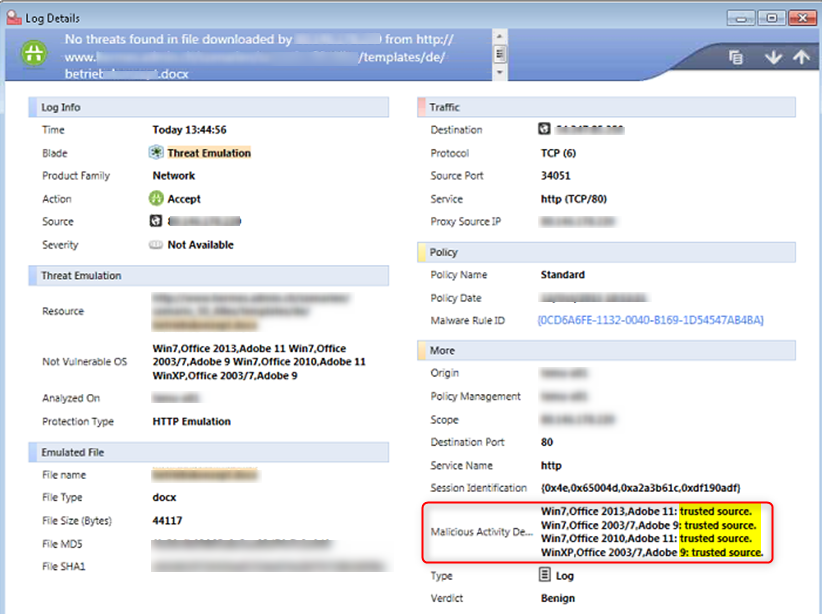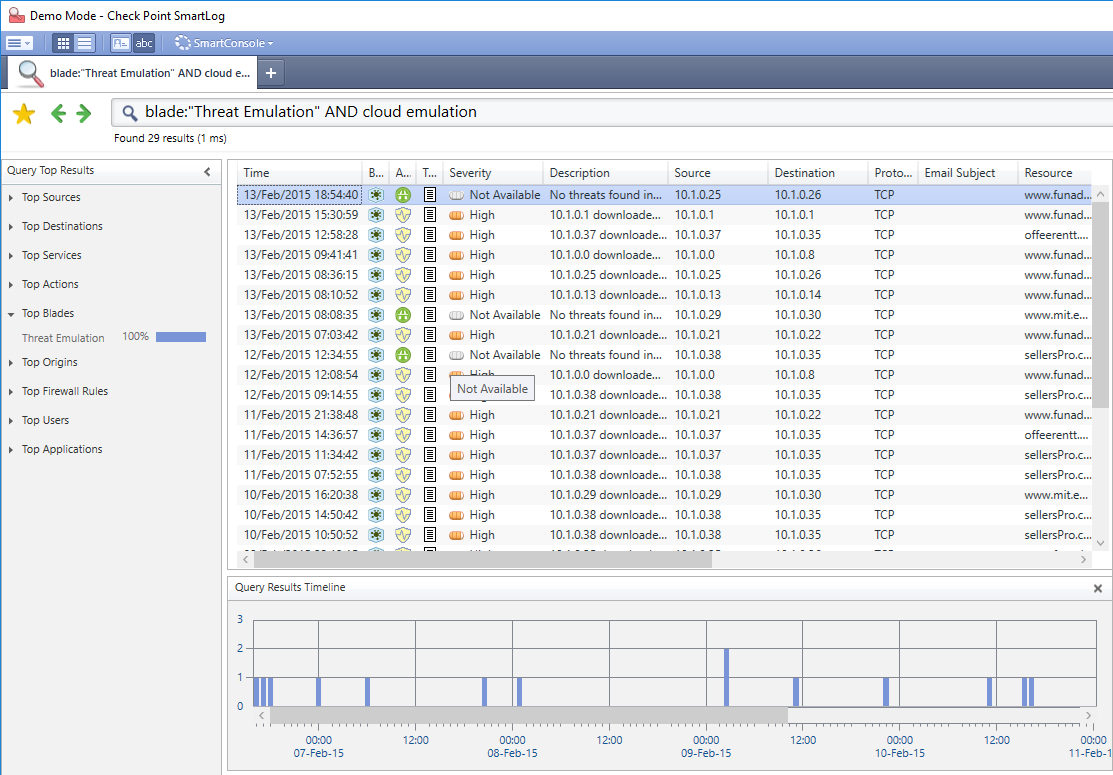- Products
Network & SASE IoT Protect Maestro Management OpenTelemetry/Skyline Remote Access VPN SASE SD-WAN Security Gateways SmartMove Smart-1 Cloud SMB Gateways (Spark) Threat PreventionCloud Cloud Network Security CloudMates General CloudGuard - WAF Talking Cloud Podcast Weekly ReportsSecurity Operations Events External Risk Management Incident Response Infinity AI Infinity Portal NDR Playblocks SOC XDR/XPR Threat Exposure Management
- Learn
- Local User Groups
- Partners
- More
This website uses Cookies. Click Accept to agree to our website's cookie use as described in our Privacy Policy. Click Preferences to customize your cookie settings.
- Products
- AI Security
- Developers & More
- Check Point Trivia
- CheckMates Toolbox
- General Topics
- Products Announcements
- Threat Prevention Blog
- Upcoming Events
- Americas
- EMEA
- Czech Republic and Slovakia
- Denmark
- Netherlands
- Germany
- Sweden
- United Kingdom and Ireland
- France
- Spain
- Norway
- Ukraine
- Baltics and Finland
- Greece
- Portugal
- Austria
- Kazakhstan and CIS
- Switzerland
- Romania
- Turkey
- Belarus
- Belgium & Luxembourg
- Russia
- Poland
- Georgia
- DACH - Germany, Austria and Switzerland
- Iberia
- Africa
- Adriatics Region
- Eastern Africa
- Israel
- Nordics
- Middle East and Africa
- Balkans
- Italy
- Bulgaria
- Cyprus
- APAC
CheckMates Fest 2026
Join the Celebration!
AI Security Masters
E1: How AI is Reshaping Our World
MVP 2026: Submissions
Are Now Open!
What's New in R82.10?
Watch NowOverlap in Security Validation
Help us to understand your needs better
CheckMates Go:
Maestro Madness
Turn on suggestions
Auto-suggest helps you quickly narrow down your search results by suggesting possible matches as you type.
Showing results for
- CheckMates
- :
- Products
- :
- Network & SASE
- :
- Security Gateways
- :
- Understanding Threat Emulation logs
Options
- Subscribe to RSS Feed
- Mark Topic as New
- Mark Topic as Read
- Float this Topic for Current User
- Bookmark
- Subscribe
- Mute
- Printer Friendly Page
Turn on suggestions
Auto-suggest helps you quickly narrow down your search results by suggesting possible matches as you type.
Showing results for
Are you a member of CheckMates?
×
Sign in with your Check Point UserCenter/PartnerMap account to access more great content and get a chance to win some Apple AirPods! If you don't have an account, create one now for free!
- Mark as New
- Bookmark
- Subscribe
- Mute
- Subscribe to RSS Feed
- Permalink
- Report Inappropriate Content
Understanding Threat Emulation logs
In a TE log you can find additional important information how a file was processed:

In the example above "trusted source" means that this file was bypassed by the global whitelist hence it was not emulated.
Different values explained:
| Value | Comment |
|---|---|
| trusted source | file bypassed emulation due to Check Point maintained and automatically updated TE whitelist |
| emulator | file was locally emulated on a SandBlast Appliance |
| cloud emulation | file was sent to cloud emulation |
| remote emulation | file was sent to a remote SandBlast Appliance for emulation (this log is usually issued by a gateway connected to a SandBlast appliance) |
| static analysis | file was pre-filtered by static analysis and was not emulated |
| local cache | file´s SHA1 was already found in cache (# tecli cache dump all) and was not emulated; action is based on the cached verdict |
| archive | handled file was an archive |
| logger | You get "logger" for a "malicious" file as verdict decider when the file was not successfully emulated but other advisories already convitced the file as malicious |
| file | When trying to emulate the file the actual file size was 0 |
In depth info of e.g. static analyis, cache handling etc can be found in the amazing ATRG: Threat Emulation SK:
With this knowledge you can easily query all files that e.g. were really sent to cloud for emulation:

With SmartLogs Timeline results you can even quickly check how file amount was handled over a certain timeframe.
This is also helpful for investigating performance/throuput issues.
4 Replies
- Mark as New
- Bookmark
- Subscribe
- Mute
- Subscribe to RSS Feed
- Permalink
- Report Inappropriate Content
Thanks for explanation! But what does this output mean?
Win7,Office 2013,Adobe 11:logger
- Mark as New
- Bookmark
- Subscribe
- Mute
- Subscribe to RSS Feed
- Permalink
- Report Inappropriate Content
Hi Olga,
good question 🙂
We run several so called "investigators" in TE. One of them is "logger" - it is responsible for creating a summarized report when the verdict is "malicious".
The logger is then sending the log to the Mgmt. When the verdict "decider" is "logger" it means that the file arrived at the logger investigator with no previous conviction by TE.
This can happen when emulation is not possible due to an error in the emulation process. So usually this results also in an emulation error but if other advisories (besides the sandbox emulation) already convicted the file as malicious the logger changes the "error" verdict to "malicious".
So as a summary:
You get "logger" for a "malicious" file as verdict decider when the file was not successfully emulated but other advisories already convicted the file as malicious.
Regards Thomas
- Mark as New
- Bookmark
- Subscribe
- Mute
- Subscribe to RSS Feed
- Permalink
- Report Inappropriate Content
Dear Thomas,
Regarding the value 'trusted source', is it possible to view the contents of the TE whitelist maintained by Check Point?
Best regards,
Andre
Regarding the value 'trusted source', is it possible to view the contents of the TE whitelist maintained by Check Point?
Best regards,
Andre
- Mark as New
- Bookmark
- Subscribe
- Mute
- Subscribe to RSS Feed
- Permalink
- Report Inappropriate Content
What about logs with "policy" ? We found that too with r80.30 gateway.
Win10 64b,Office 2016,Adobe DC: policy. Win7,Office 2013,Adobe 11: policy.
Leaderboard
Epsum factorial non deposit quid pro quo hic escorol.
| User | Count |
|---|---|
| 22 | |
| 18 | |
| 11 | |
| 8 | |
| 7 | |
| 4 | |
| 3 | |
| 3 | |
| 3 | |
| 3 |
Upcoming Events
Thu 08 Jan 2026 @ 05:00 PM (CET)
AI Security Masters Session 1: How AI is Reshaping Our WorldThu 08 Jan 2026 @ 05:00 PM (CET)
AI Security Masters Session 1: How AI is Reshaping Our WorldAbout CheckMates
Learn Check Point
Advanced Learning
YOU DESERVE THE BEST SECURITY
©1994-2025 Check Point Software Technologies Ltd. All rights reserved.
Copyright
Privacy Policy
About Us
UserCenter


